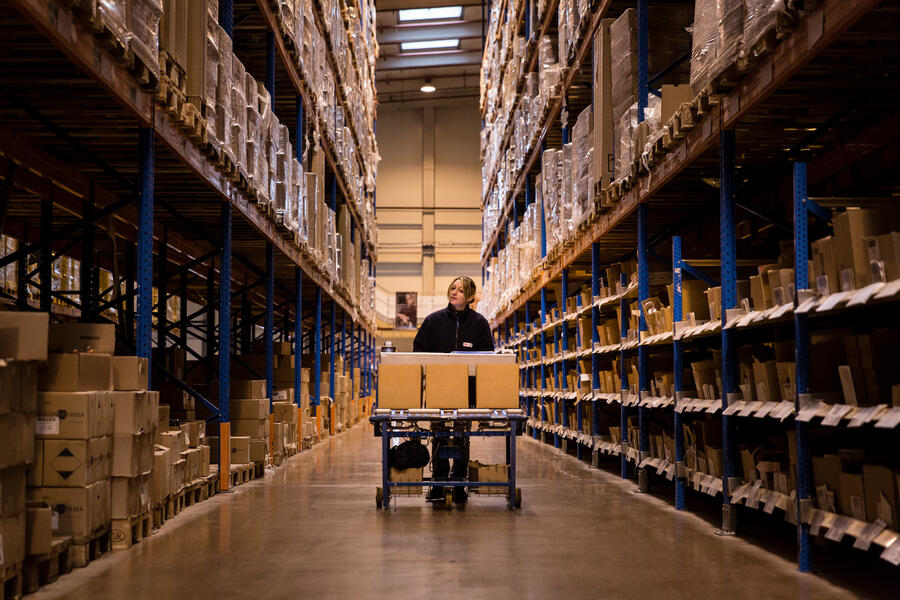With the powerful and unavoidable upward trend in online shopping, forecasted to continue long into the next decade, our towns and cities are faced with increasing challenges arising from the resultant higher demand for urban logistics. Research anticipates that omnichannel consumers will significantly expand their online buying into currently low penetration categories, such as groceries and furniture. Result: while today already one in eight vehicles in the inner city is a van or a truck, the number of delivery vehicles in the world’s top 100 cities is set to grow by 36% by 2030, and urban last-mile delivery is projected to rise by 78% over the same period. Meanwhile, despite the electrification of vehicle fleets, emissions are set to rise by 32%, with the expected 21% more congestion, thus lengthening the commuter times by 11 minutes on average. Here, a series of externalities can be attributed to urban logistics.
Keeping the omnichannel promise
In addition to these macro factors, supply chain professionals need to address a series of challenges to fulfil their clients’ and end customers’ expectations, the first among them being timely delivery to the customer – or reducing non-deliveries. According to an Ipsos survey, 25% of customers encounter delivery delays, and 13% complain of inaccurate parcel tracking. Increasing delivery time accuracy and shortening delivery slots are sure-fire ways of getting the parcel safely into the recipient’s hands. Transparent and successful last-mile deliveries, which keep the brand’s promise, enhance the omnichannel experience and drive customer loyalty.
But, to fulfill expectations and manage the workload, professionals are always on the lookout for solutions to increase delivery speed, avoid congestion, and make more efficient use of vehicle fleets. Without forgetting environmental considerations: covering shorter distances, adopting eco-friendly practices – a differentiator not lost on certain segments of clientele, happy to wait longer if this helps save the planet. To solve these multifaceted conundrums, professionals can today bank on modern route planning software, which opens up further avenues for optimisation and brand differentiation.
Vehicle visibility contributes to driver empowerment
Although, the route planning software is not new to the logistics professionals. Its contemporary, tech-enabled incarnations offer multiple functions to deliver a successful omnichannel last-mile experience. Smart planning can help reduce the total distance driven, by up to 20%, according to Accenture, while the solution also improves vehicle occupancy by 30%, consequently optimising the dropshipment. Meanwhile, on the driver’s side, given that the data is continuously mapped from the vehicle and the driver’s mobile device, the operator has an array of information sources to verify compliance with the recommended route, live delivery success rates, the likelihood of late deliveries, and even driving behaviour, from the van’s speed profile. This feedback can be leveraged, to provide evidence in the processing of customer claims or complaints, or learn from incidents, such as congestion or road closures, in order to plan shorter, more efficient or less carbon-emitting routes in the future. It could also form a basis for raising awareness towards eco-driving.
The undeniable advantage of modern route planning software, however, is its ability to enhance the role of delivery drivers by making their life easier and increasing the quantity and quality of last-mile services they provide. Some solutions help the driver to load their van in the depot, colour-coding parcels in order of delivery, to enable seamless handover at the point of arrival. Others will incorporate white-glove services for premium brand omnichannel experiences, or include additional services, such as furniture assembly. As such, the route planning software can reduce the calls to drivers by up to 60%, add more value to the drivers’ work, uplift the brand image, and ultimately drive employee satisfaction and retention.
Aligning with the brand
With delivery today being an integral part of the consumer’s brand journey, despite being outside the seller’s direct control, urban logistics providers must devote time and resources to designing their route planning software as an extension of the desired brand experience. Whether to prioritise ultra-transparency and vehicle tracking, guarantee next-day delivery, or offer customers the choice of an eco-friendly delivery option at the expense of rapidity, the software can be adjusted and fine-tuned to reflect the values of the retailer client. Establishing the success criteria that matters most to the client is key to implementing a logistics and delivery service, that fits them perfectly.
A green, data-driven, omnichannel future
What comes next in the green roadmap of the route planning software? With ongoing estimations concerning the reduction of carbon emissions by up to 25%, by leveraging this solution, consumers’ increasing eco-awareness will lead to operators highlighting the “green” delivery slots. One option could be to share the delivery rounds and vehicles between the sellers : a bridge that is currently difficult to cross for many brands in their desire for exclusivity. Meanwhile, increasing the drop density will lead the “last mile” to become the “last meter”, with more deliveries made by bike, or on foot. This could also entail greater use of pickup lockers for convenience, and the bonus of guaranteed delivery, thus further enabling returns. Although, reverse logistics can be already integrated into the route planning software, today. Finally, in certain geographies, where insufficiently reliable address data can hamper optimal deliveries and success rates, improved geocoding will be crucial to delight the end-customer, and satisfy the retail client, via omnichannel.



